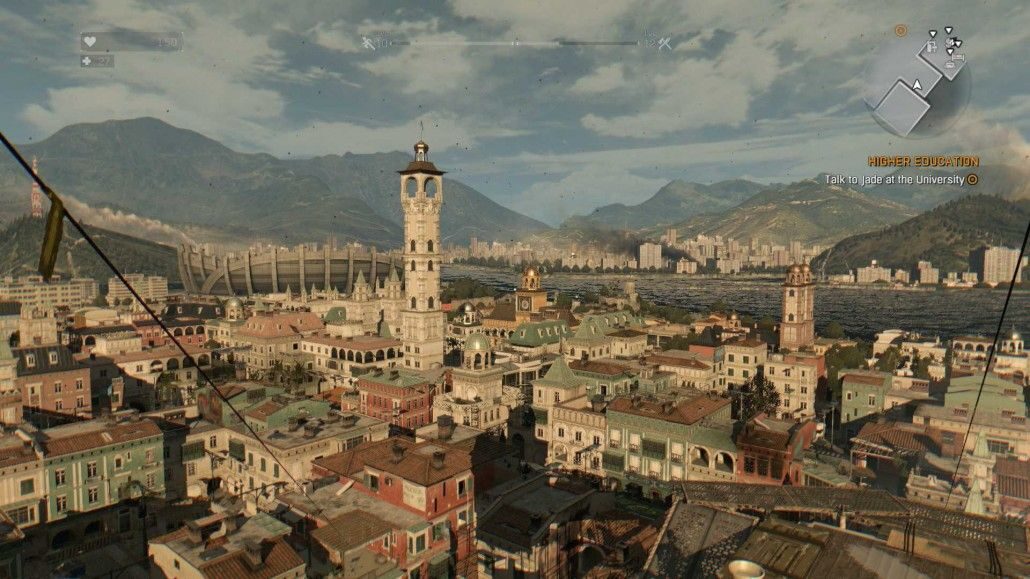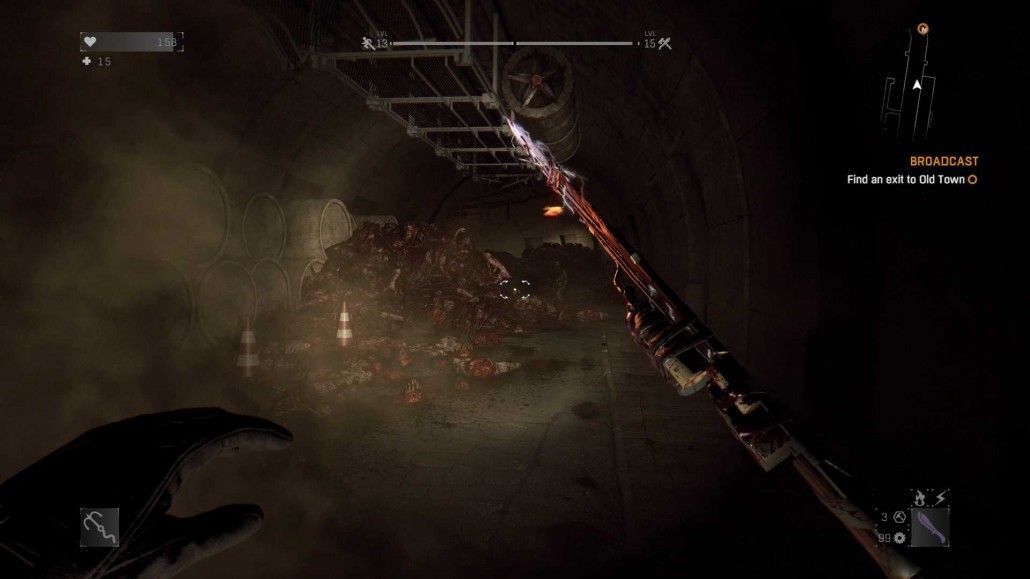Zombies, the quintessential killing machines bereft of any emotions and pain, perfect for video games. As much as we hate to admit it, the gaming industry is chock full of zombie games, most of which satisfy the player’s need of a stress-relieving bullet sponge. But one in a while, we get something more (or do we?). Something like Dying Light.
Story
You are Kyle Crane, a special agent given a special mission in a special city, sent to infiltrate and extract a special package. After showing landing skills similar to a dive bomber, Kyle finds himself in the middle of a scuffle, mugged by aggressive survivors in Harran’s slums. But the problematic engagement ended with Kyle getting saved by the local good guys. To repay their kindness (and to advance his paycheck) Kyle must accomplish his mission whilst staying anonymous.

Perfectly clichéd and predictable, Dying Light’s storyline has somehow succeeded in getting us yawn. It offers nothing new in an industry loaded with games that bank on revenge and psychotic villains. Kyle’s struggle in helping the people versus that of his wishes to continue his mission is laughable at best, making you wonder why he continues to follow despite knowing better. To sum it all up, the story leaves nothing for imagination, nor does it have it in the first place.
Gameplay
In contrast with its laughable portrayal of a story, Dying Lights parkour and combat mechanics work. Famous (or infamous) for their work in Dead Island, Techland has managed to capture the severity of a survival apocalypse by allowing you, the player, freedom to do things on top of other people’s houses.
The exploration feels awkward at first as the free-run button and jump buttons are the same. Similar to the Assassins’ Creed series, holding this free-run button allows the player to vault and scale across obstacles with varying heights.
As an open-world zombie-apocalyptic game, Dying Light grants the player with promises of unrestricted exploration with rewarding loot. However, despite the glamour and large cityscape, Dying Light offers only a glimpse of the whole, opening only a segment of what could’ve been a very large battleground. Disappointing, yes. But the size of the map is adequate enough to tire you by just travelling across each border on foot.
Dying Light makes use of a system of progression similar to RPGs. The more you parkour and slay zombies, the more experience to be had for an increase in speed and techniques. Leveling-up grants players faster vaulting and more combat moves to execute. Completing various quests around Harran also grants the player survivor points which is more on gathering resources and interacting with the survivors.
Combat is mainly more on melee. Blueprints and various objects in the game can be used as tools to go medieval on the walking corpses. As crazy as it may sound, one can also harness electricity, fire, and poison, adding more damage per swing. The game also has its very limited selection of firearms but as it stands, they are only useful against the living since they invite the attention of the undead due to their loudness.
You might wonder why you need the parkour in a land with slow-moving, monotonous flesh-eaters, but once night falls, you’ll know the reason why the game is called Dying Light.
Sleep Tight
Once night falls, everything goes on steroids. Zombies no longer walk, they climb, they sprint, and they jump. If the roided zombies weren’t enough for the trouble, there’re also the Volatiles to consider. Volatiles are the reason why Dying Light’s night is to be feared. Lean and mean killing machines, Volatiles are very agile and hardy against conventional attacks. All you can do (in the early-mid game) is run and occasionally look back for a quick dodge.
Presentation
It would be a shame if the game failed to give light a good digital portrayal, thankfully, that is not so. Dying Light’s engine has managed to give in-game lighting a great makeover by making it dynamic and fluid. Weather and time each have their respective take on the game’s illumination, breathing life into a dead and rotting city.
The zombies are also worth noting. They’re not the typical cookie cutter productions usually found in most zombie games as they’re diverse and graphically distressing, which is a good thing. Cut one down and you can see how it impacts their physiology. Dents from blunt weapons, accurate cuts from slicers, and the likes, are evident byproducts of the player’s action against the horde. Limbs and head can fly and it isn’t surprising to leave mountains of undead corpses in your wake.
Also noteworthy is Dying Light’s wind that heavily affects the clothes, linen, and other light objects. I can’t help but notice how flags and zombies’ clothes flutter naturally. It does seems trivial, but in the grand scheme of things in Dying Light, it adds to the believability of the subject.
In terms of audio, I found the voice acting to be lacking of emotion, bereft of their situation and plight They’re blocky and unbelievable, and the lines are mostly cheesy and forced. Music, on the otherhand, manages to pinch your heart as you trudge alone over the rooftops, chased by a group of Volatile fans screaming for your blood.
Conclusion
If you’re a fan of zombie games, Dying Light is a must for you. The parkour mechanics, together with the melee combat, is undeniably fun. The game is also constructed in a way that you keep on discovering more as you progress. I have to admit, I really enjoyed it. At first.
Sadly, the game’s push and charm is not enough to keep you coming back for more. Once I put down my controller, it took me days to get back. It’s not that memorable, lacking the identity to tempt you to play it again. It is tagged as a survival game, but once you get into the late game, the food chain reverses. In my last playthrough, I managed to cut down droves of Volatiles with my handy dandy double electric, fire-blessed, machete. Some games have you going for more if you love the feeling of being the alpha, but I feel that this one defeats the purpose.
Dying Light is enjoyable but it’s not a game worth playing in the long haul. Sure, it expands more into an undead apocalypse world, but it manages to fall short of reaching the other side due to its cheesy storyline, inconsistent play design, and zombie-like clichés. It’s not a game that would stick in your mind after a year or so. The multiplayer feature also has its advantages but it feels like forced rather than integral to the game’s overall identity. Should you buy it? Wait for a sale.
Comments
comments
